Introduction to the Port
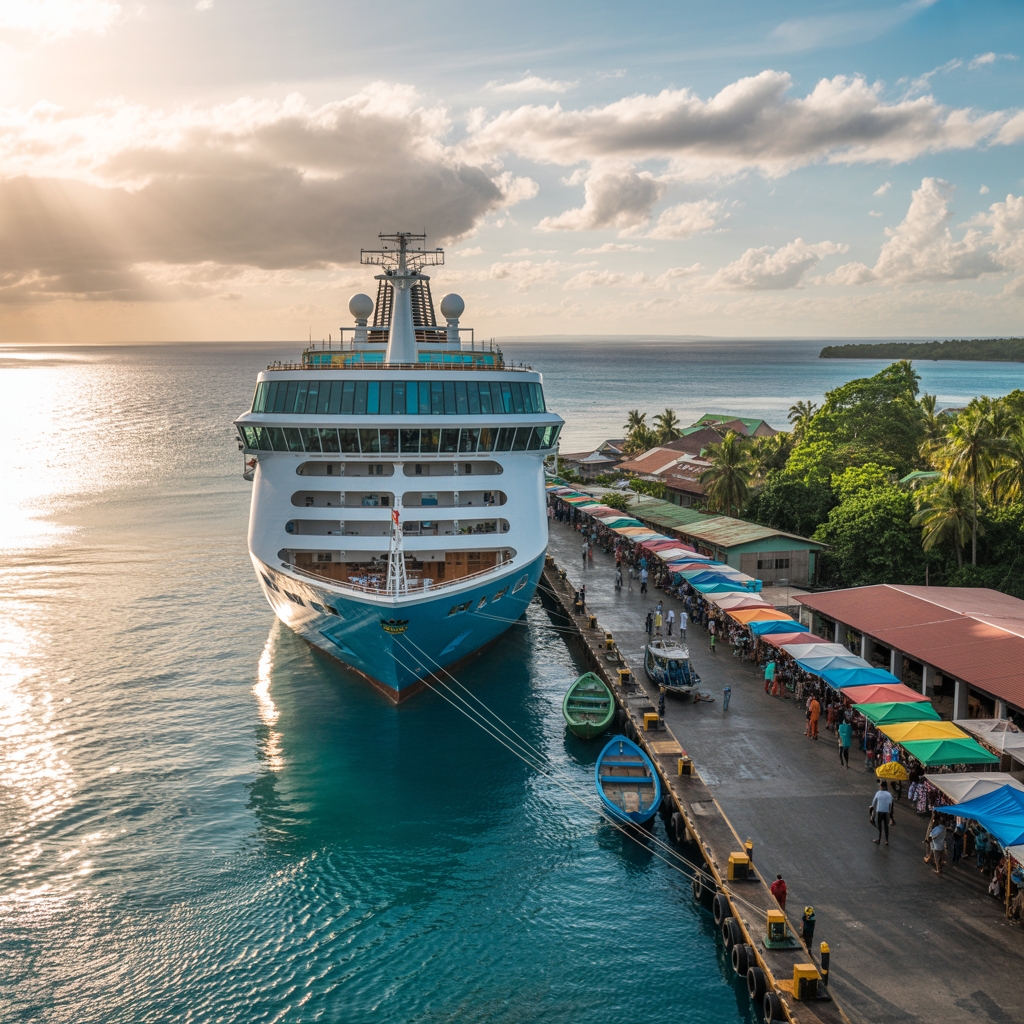
Imagine this: you’re stepping off your cruise ship onto Pemba Island, and the first thing that hits you is that warm, spice-tinged breeze rolling off the Indian Ocean. The port buzzes with a delightful mix of local fishermen hauling in their catch, tourists snapping photos of dhows bobbing in the harbor, and cargo workers moving goods with that unhurried efficiency you only find on islands.
For other Mozambique Cruise destinations check out our Mozambique Cruise Ship Port Guide page.
It’s not the massive, overwhelming cruise terminal you might expect – this is Tanzania’s Zanzibar Archipelago, after all, where charm trumps size every single time.
Now, before you start exploring around like I tend to do when I’m somewhere new and exciting, let me save you from a few rookie mistakes. This port just got a serious makeover in 2024, so things are looking pretty spiffy, but it’s still got that authentic island atmosphere that makes your heart skip a little.
The logistics here work differently than your typical mega-port, the local customs have their own rhythm, and honestly, knowing a few insider tricks will make your Pemba journey so much smoother.
Trust me, we’re going to cover everything from getting your bearings when you dock to steering through those initial moments when you’re trying to figure out which way leads to the best encounters on this gorgeous island.
Map of Pemba Cruise Ship Port
Why Cruise From this Port?
Pemba Island provides something most cruise ports simply can’t match – that perfect sweet spot where authentic escapade meets genuine relaxation, without the tourist crowds breathing down your neck.
- Gateway access to Tanzania’s legendary safari parks and Zanzibar’s historic attractions
- Pristine diving and snorkeling in untouched coral reefs with whale shark encounters
- Authentic cultural encounters with local fishing communities and spice plantation tours
- Strategic location for exploring the broader Indian Ocean region on extended itineraries
- Eco-friendly tourism options that actually benefit local communities
“What I love about Pemba is that passengers get off the ship genuinely excited because they know they’re somewhere special,” says Captain Maria Santos, who’s been coordinating cruise operations in the region for twelve years.
“It’s not just another beach stop – it’s this incredible combination of marine exploits, cultural immersion, and that gateway element where you can easily hop over to see the Big Five or explore Stone Town, all from one beautiful, uncrowded base.”
Cruise Terminal(s) Overview
| Terminal | Facilities | Distance to City Centre | Walkable | Luggage Storage | WiFi Availability (Yes/No) |
|---|---|---|---|---|---|
| Mkoani Port | Basic passenger terminal with waiting areas, ticketing counters, restrooms, taxi stands, tour operators nearby | 0.5 miles | Yes | Not documented | No |
Look, I’m not going to sugarcoat this – Mkoani Port isn’t exactly what you’d call a cruise terminal wonderland. It’s invigoratingly honest in its simplicity, which honestly feels kind of perfect for an island where the main attractions are underwater coral gardens and spice farms that smell like heaven.
The main passenger terminal handles everything from ferries packed with locals heading to Zanzibar to the occasional small cruise ship that’s figured out this concealed treasure. You’ll find the basics covered – places to sit while you wait, actual functioning restrooms (always a win), and ticket counters where friendly staff somehow manage the chaos of ferry schedules that, let’s be real, operate more on island time than Swiss precision.
What really works here is the proximity to everything. Half a mile to the center of Mkoani town means you can literally walk off your ship and be buying fresh coconuts from street vendors in about ten minutes. No shuttle buses, no complicated logistics – just your own two feet and maybe a quick taxi ride if you’re feeling fancy or hauling serious luggage.
The thing that might surprise you is how the simplicity actually enhances the whole encounter. Instead of sterile cruise terminal lounges with overpriced coffee, you get this authentic port atmosphere where fishing boats bob next to passenger ferries, and tour operators who know every diving spot and spice plantation on the island are hanging around ready to chat about escapades.
Sure, you won’t find luggage storage or WiFi here, but honestly, isn’t that kind of the point? Sometimes the best ports are the ones that gently nudge you away from your phone and toward the actual reason you came – those crystal-clear waters and authentic island moments that feel increasingly rare in our over-connected world.
Transport Options to the Port (From City Centre)
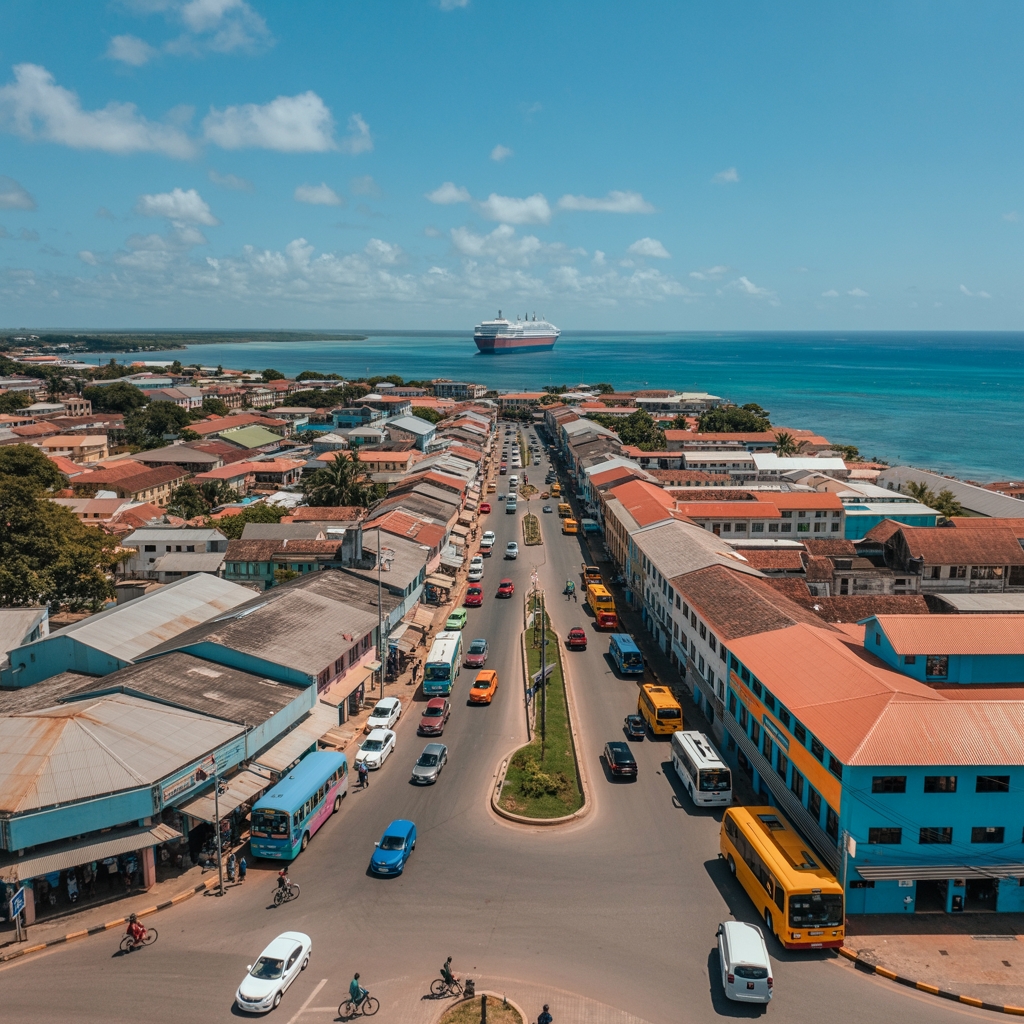
Getting from Pemba’s city centre to Mkoani Port is invigoratingly straightforward, with options ranging from budget-friendly local taxis to luxury shuttles that’ll treat you like royalty.
| Transport Option | Cost Estimate (€/$) | Travel Time | Frequency | How to Book/Use |
|---|---|---|---|---|
| Private Transfer | $100 per group | 20-60 minutes | On-demand | Book via Viator/Tripadvisor with advance reservation |
| Luxury Shuttle | $300 per group | 20-60 minutes | On-demand | Pre-book through agencies, includes premium amenities |
| Local Taxi | Negotiable fare | 20-60 minutes | Limited during peak season | Hail on street, negotiate fare beforehand |
| Group Transfer | Split cost among passengers | 20-60 minutes | Fixed routes | Advance coordination required, 6-10 passengers |
| Pre-booked Port Transfer | Varies, no hidden fees | 20-60 minutes | Scheduled | Book through agencies with real-time tracking |
How to Get from the Airport to the Cruise Port
Getting from Pemba Airport to the cruise port feels surprisingly manageable when you realize most transfer services treat it like just another resort drop-off, which means you’re basically guaranteed air conditioning and someone who speaks English.
| Transport Option | Cost Estimate (€/$) | Travel Time | Frequency | How to Book/Use |
|---|---|---|---|---|
| Private Airport Transfer | $100 per group (up to 4) | 30-50 minutes to south port | On-demand 24/7 | Book through Viator or GetYourGuide, reserve now pay later |
| Karibu Taxi Service | $100+ per group | 30-50 minutes south, 2-3 hours north | Available 24/7 | Direct booking, serves major resort areas |
| Shared Group Transfer | Split $100+ among passengers | Varies with stops | Scheduled service | Coordinate through transfer companies, up to 4 per vehicle |
| Late Night Transfer | $100+ plus surcharge | 30-50 minutes typical | Limited overnight | Book with 24-hour notice, additional fees apply |
| Off-road Port Transfer | $100+ for specialized vehicle | 2-3 hours if northern route | On-demand | Required for rugged terrain, book capable vehicles |
Parking and Accessibility at the Port
Pemba Island’s cruise port parking situation is basically the transportation equivalent of a mystery novel, which means you’ll want to sort this out before you’re standing there with your luggage wondering where to leave your rental car.
- Parking availability exists but details are sketchy – the port has designated short and long-term parking areas, though nobody’s publishing capacity numbers or exact spot counts.
- Pricing structure remains a complete unknown – daily and hourly rates aren’t listed anywhere, so you’re flying blind on costs (though similar regional ports might charge $7-15 per day).
- Oversized vehicles need special planning – if you’re driving something bigger than a standard car, expect additional fees and call ahead to confirm they can accommodate you.
- Accessibility features aren’t clearly documented – disabled parking, covered areas, and proximity to terminals aren’t specified in any official sources.
- Your best bet is calling the port authority directly – since the details are so sparse, a quick phone call will save you from arrival day surprises and potential parking headaches.
Common Mistakes First‑Time Cruisers Make at the port
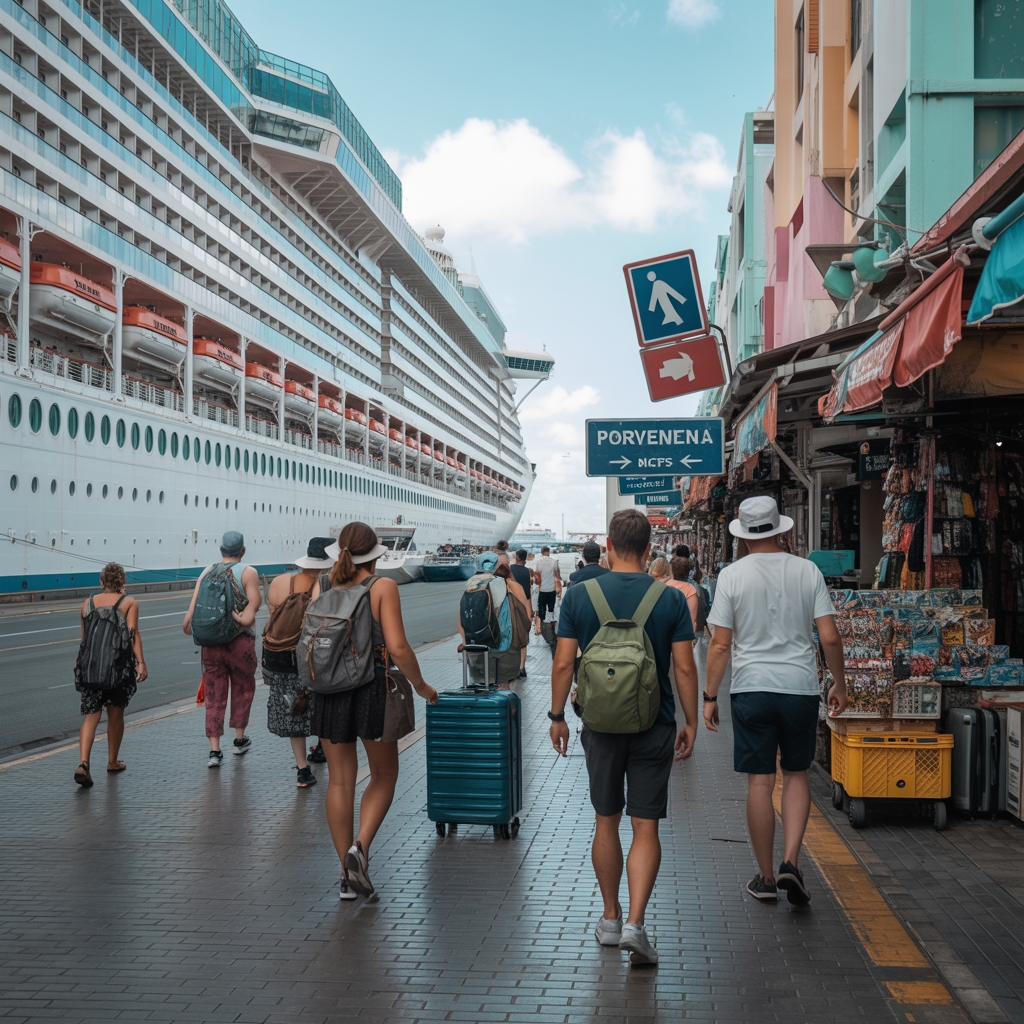
First-time cruisers at Pemba port tend to make the same rookie mistakes that’ll have you scrambling like you’re trying to solve a Rubik’s cube while blindfolded.
- Forgetting your passport even for short shore excursions – yes, you actually need it every single time you leave the ship, even if you’re just popping out for an hour.
- Not checking if the ship’s time matches local time – nothing quite like showing up to the port two hours late because you assumed they were the same.
- Bringing fruit or snacks back on board – customs officials take this stuff seriously, and that innocent banana could cost you inspection delays.
- Wearing flip-flops to mosques or cultural sites – inappropriate dress will get you turned away faster than you can say “tourist mistake.”
- Scheduling your return right at the “all aboard” time – traffic happens, boats break down, and the ship absolutely will leave without you.
- Not carrying small bills in local currency – vendors, taxi drivers, and tip situations become awkward fast when you’re waving around large denomination bills.
- Assuming your phone will work perfectly – download offline maps and have backup plans because international roaming can be spotty at best.
Things to do Near The Port
You’ll find yourself surrounded by enough activities to keep you busy whether you’ve got two hours or an entire day to explore this slice of Zanzibar’s quieter cousin.
- Chake Chake Old Fort – Portuguese-era ruins that tell stories of colonial conquest and local resistance, just a short walk from where most ships dock.
- Traditional dhow workshops – watch craftsmen build these iconic sailing vessels using techniques passed down through generations, plus you can actually talk to the builders.
- Spice plantation tours – Pemba’s clove farms offer quick visits where you can smell, taste, and learn why this island once drove global spice markets crazy.
- Local markets near the port – colorful stalls selling everything from fresh tropical fruits to handwoven baskets, and the haggling is half the fun.
- Swahili village walks – nearby communities where daily life unfolds at a pace that’ll make you question why you’re always rushing back home.
- Mangrove kayaking starting points – several operators launch right from areas close to the port, perfect for spotting birds and getting a different perspective on island life.
See what’s on offer from the Port of Beira for a different Mozambique Cruise destination.
Short Walks Close to the Port
These gentle strolls let you stretch your legs without wandering too far from your floating home base.
| Name | Start Point | Distance | Time Needed | Highlights |
|---|---|---|---|---|
| Chake Chake City Walk | Main port entrance | 2.5 km | 2-3 hours | Hilltop bay views, government buildings, local banking district where you’ll see how island business really works |
| Persian Ruins Trail | Coastal road near port | 1.8 km | 1.5-2 hours | 11th-century Shirazi foundations, ancient mosque remnants on flat sandy paths that won’t destroy your cruise shoes |
| Village Artisan Route | Port area fishing docks | 1.2 km | 1-2 hours | Traditional dhow boat builders, local schools, fishing community interactions that feel authentic instead of staged |
| Spice Farm Sample Walk | Port access road junction | 3 km | 2-3 hours | Working clove plantations, fresh fruit tastings, cultivation demos where you’ll finally understand why people fought wars over nutmeg |
Dining and Shops Within Walking Distance of the Port
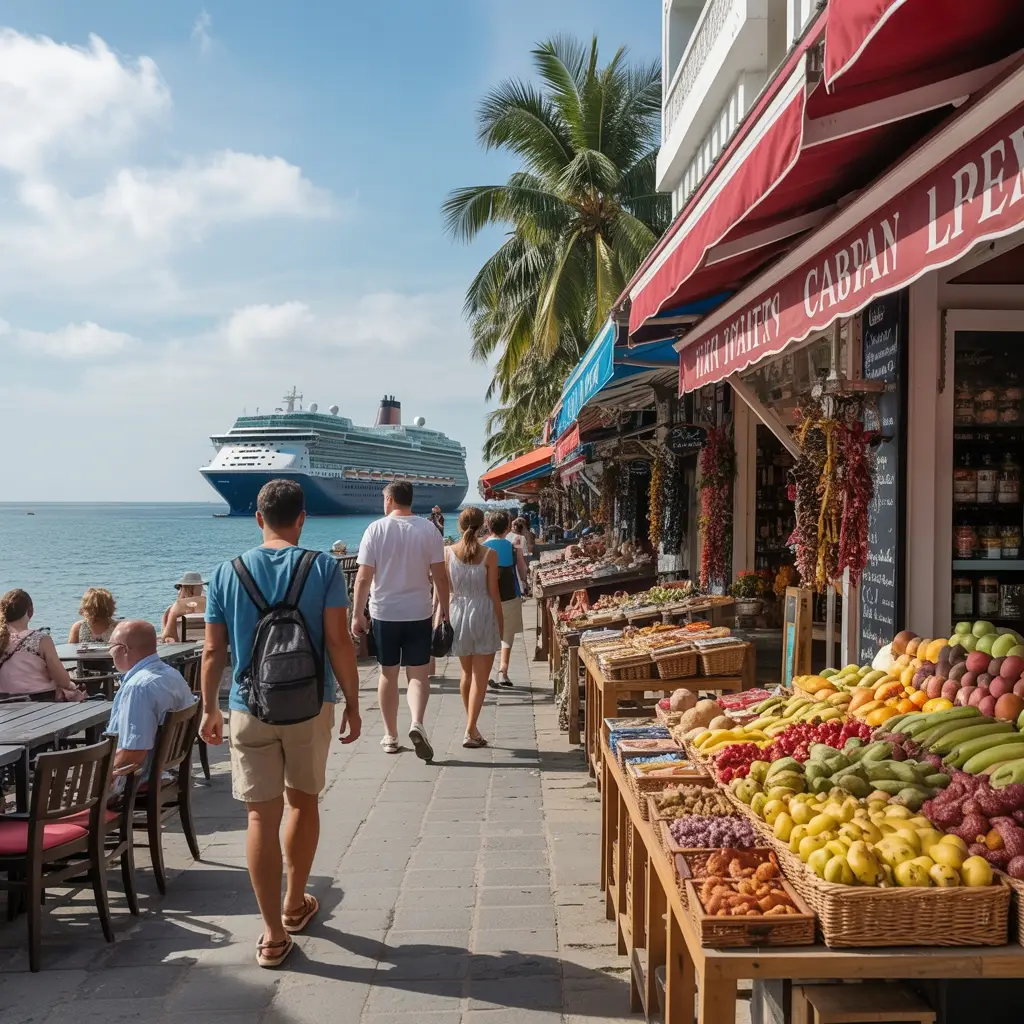
The dining scene around Pemba’s port won’t overwhelm anyone with endless choices, but the handful of spots within walking distance serve up some surprisingly satisfying meals and essential shopping needs.
Local Seafood Restaurants
- Pemba Sunset Restaurant presents fresh catch-of-the-day grilled over charcoal, usually snapper or kingfish that arrived on the same boats you’ll see tied up at the docks.
- Gecko Nature Restaurant specializes in Indian Ocean cuisine with coconut curry bases, perfect when the ship’s buffet has left everyone craving actual spices.
- Pemba Moonlight Guesthouse restaurant serves traditional Swahili dishes like pilau rice and grilled prawns, though the atmosphere feels more like eating in someone’s living room.
- Local fish market stalls cook fresh octopus and calamari right on portable grills, which sounds sketchy but tastes incredible.
- Beachside grilling spots near the fishing boats offer the most authentic encounter, where pointing and smiling works better than any phrase book.
International and Fusion Options
- Pemba Paradise Beach Resort restaurant creates fusion dishes mixing European techniques with local ingredients, though it’s a 15-minute walk from the main port area.
- Small Indian restaurants in the market district serve curry and chapati that locals actually eat, not the watered-down tourist versions.
- Italian-influenced pizzerias near the government buildings use wood-fired ovens and local seafood toppings.
- Chinese takeaway shops provide fried rice and noodle dishes that hit the spot when tropical food fatigue sets in.
- Hotel restaurants in walking distance typically present continental breakfast items and simple grilled meats for unadventurous eaters.
Coffee Shops and Quick Bites****
- Roadside tea stalls serve strong Kenyan coffee and mandazi pastries that cost less than ship coffee but taste infinitely better.
- Fruit vendors near the port entrance sell fresh mangoes, coconuts, and passion fruit that makes perfect between-meal snacks.
- Small bakeries in Chake Chake center offer fresh bread, samosas, and sweet pastries baked in the early morning hours.
- Corner shops stock cold sodas, bottled water, and packaged snacks for those planning longer walking tours.
- Ice cream carts appear near the port during cruise ship arrivals, selling surprisingly good tropical fruit flavors.
Souvenir and Craft Shopping
- Local craft market near the port entrance features handwoven baskets, wooden carvings, and spice packets that actually make decent gifts.
- Fabric shops sell colorful kanga cloths and traditional wraps, though bargaining skills become essential for reasonable prices.
- Jewelry stalls offer silver pieces and coral accessories, but distinguishing authentic items from mass-produced imports requires a keen eye.
- Spice vendors package cloves, cardamom, and cinnamon in tourist-friendly quantities, perfect for bringing Pemba’s flavors home.
- Small art galleries showcase local paintings and photography, though inventory tends toward the hit-or-miss category.
Essential Supplies and Convenience Shopping****
- Pharmacies near the market center stock basic medications, sunscreen, and personal care items that cruise ships charge premium prices for.
- Mini-markets offer bottled water, snacks, and phone charging cables at prices that won’t destroy vacation budgets.
- Currency exchange offices provide better rates than ship services, though bringing US dollars simplifies most transactions.
- Phone card vendors help with international calls and local SIM cards for travelers wanting connectivity independence.
- Small hardware stores surprisingly stock items like adapters, batteries, and basic electronics that travelers frequently forget or lose.
Emergency Contacts at the Port
When something goes wrong at Pemba port, you’ll want these numbers saved in your phone before you need them, because scrambling around asking random people for help while dealing with an emergency feels about as fun as it sounds.
Port Authority and Safety Issues
- Zanzibar Port Authority (ZPA) handles all official port problems via VHF Channel 16, whether that’s missing life jackets or sketchy safety violations you notice.
- Port administrative office sits right at the end of Mkoani pier with clear signage, so you can walk there instead of trying to explain your problem over a crackling radio.
- Report any vessel inspection concerns or incidents directly to ZPA inspectors, though you’ll need to give them advance notice rather than just showing up.
Medical and Fire Emergencies
- Zanzibar emergency line +255 24 223 2121 connects you to local fire and rescue services when things get serious.
- Abdalla Mzee Hospital emergency line +255 773 333 777 reaches Pemba’s main hospital, which hopefully you’ll never need but good to know exists.
- Port Health Office at Mkoani handles disease outbreaks and medical evacuations at +255 777 860 112, plus they’ll approve any emergency passenger disembarking.
Security and Criminal Issues
- Police marine unit +255 777 472 010 deals with security threats, theft, and the extremely unlikely but theoretically possible piracy incidents.
- UK Maritime Trade Operations +44 2392 222 060 takes reports of serious maritime security problems.
- EU Naval Force patrols monitor VHF Channel 8 for real-time assistance if you somehow end up in actual danger.
Immigration and Customs Problems
- Zanzibar Immigration Department hotline +255 24 223 3766 handles emergency passport issues when your documentation gets lost, stolen, or mysteriously “confiscated.”
- Customs HQ +255 22 213 7255 helps verify legitimate fees when someone demands suspicious cash payments that smell like a scam.
Environmental Initiatives at the Port
While Pemba’s port might look like just another busy harbor from your cruise ship deck, it’s actually operating under some pretty ambitious environmental programs that go way beyond the basic “please don’t throw trash overboard” signs you’ll see everywhere.
You’re docking at a facility that’s part of the Pemba Channel Conservation Area, which monitors coral reef health and enforces sustainable fishing practices.
The port runs alien invasive species eradication programs and operates solar/wind infrastructure to reduce fossil fuel dependency.
Real-time air and water quality monitoring systems track environmental conditions at all cargo facilities.
Brief History of the Port
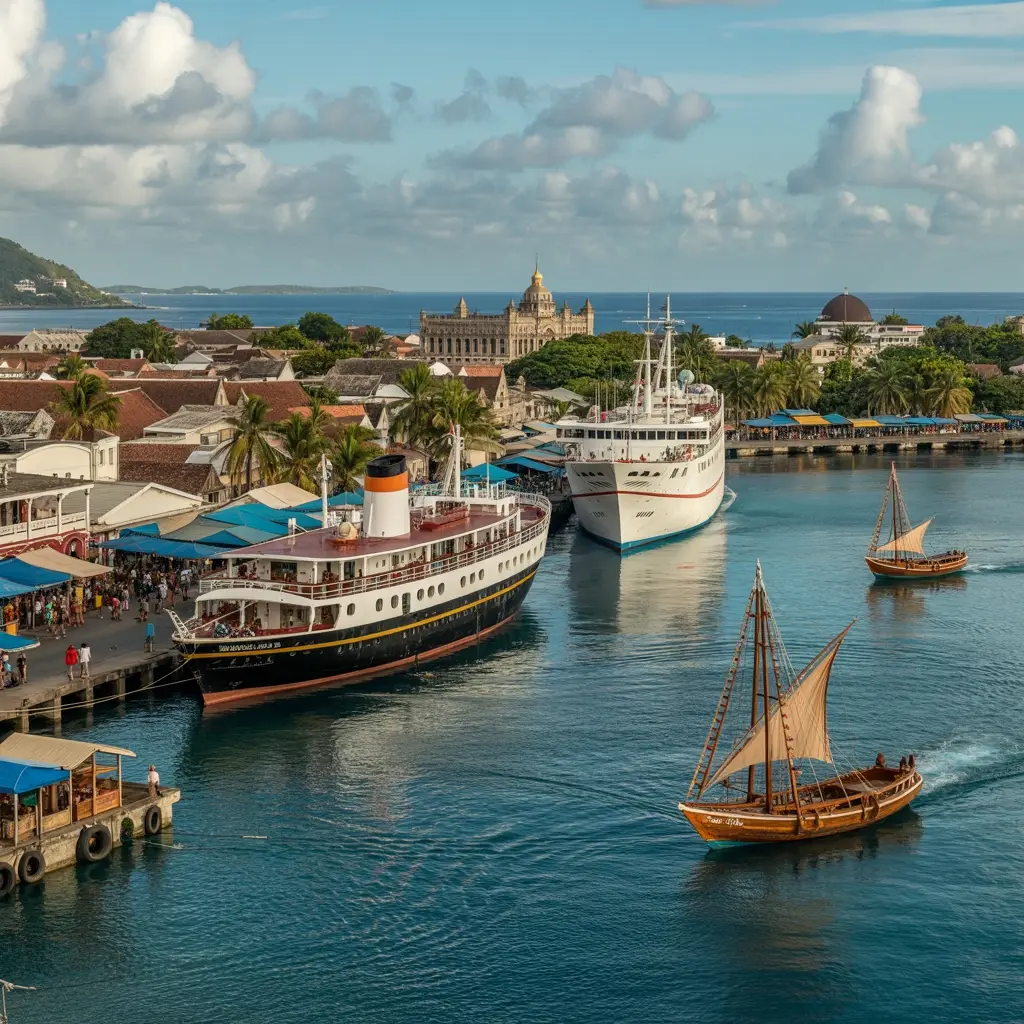
Looking out from your cruise ship as it approaches Pemba’s harbor, you’re actually sailing into one of the Indian Ocean’s most historically significant ports—a place where Bantu settlers first established trading communities as early as 600 AD.
You’ll uncover this strategic location became integral to Swahili Coast trade networks by the 13th century, exchanging ivory and gold with Indian and Chinese merchants.
Portuguese traders disrupted these routes in the 16th century, followed by Omani control that introduced clove cultivation.
Frequently Asked Questions
What Vaccinations Are Required Before Visiting Pemba on a Cruise?
You’ll need yellow fever vaccination if arriving from risk countries, plus your International Certificate of Vaccination. Hepatitis A/B, typhoid, and updated routine vaccines are recommended for safe travel.
Can I USe US Dollars or Euros at Local Shops in Pemba?
You can use US dollars at tourist services like hotels and tours, but local shops prefer Tanzanian Shillings. Euros aren’t widely accepted. Exchange money beforehand since Pemba has limited currency exchange options.
What Is the Tipping Etiquette for Local Tour Guides in Pemba?
You should tip local tour guides $10-20 per day in US dollars or Tanzanian shillings. Give tips discreetly at tour’s end, adjusting for service quality and group size.
Are There Any Cultural Dress Codes I Should Follow When Visiting Pemba?
You should dress modestly in Pemba, covering shoulders and knees. Women need long skirts or dresses, men require long pants and sleeved shirts. Religious sites enforce stricter codes requiring full coverage.
What Items Are Prohibited From Bringing Back on the Ship From Pemba?
You can’t bring weapons, firearms, illegal drugs, prescription medications without declaration, heating elements, flammable items, hoverboards, ham radios, or large batteries back onto the ship from any port.
Thinking about something different? Check out the cruises leaving from Ilha de Moçambique Cruise Ship Port.
